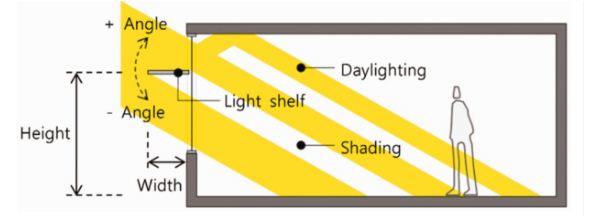Enhancing Energy Conservation, Visual and Thermal Comfort in Small Houses of Karachi
Abstract
 Abstract Views: 0
Abstract Views: 0
The significance of housing in developing cities cannot be overstated, as individuals strive to acquire and own physical assets throughout their lives, even in the case of small plots as modest as 80 square yards. In urban areas such as Karachi, smaller houses ranging from 80 to 240 square yards mostly are predominantly constructed by contractors or by owners themselves. This is to avoid additional fees charged by architects who may tailor the design to suit the context and specific requirements. Consequently, these houses tend to exhibit a similar layout, maximizing the utilization of allowable space as stipulated by the bylaws. However, this approach often leads to limited natural ventilation and daylighting, resulting in increased energy consumption for thermal and visual comfort. Hence, the current research underscores the urgency of addressing the prevailing lack of natural ventilation and daylighting in these houses. To address these concerns, it presents a comprehensive framework of passive strategies aimed at enhancing the thermal and visual comfort of occupants. Firstly, an archival study was conducted, encompassing a comprehensive literature review, which served as a foundation to understand the subject matter. Secondly, a comparative study was undertaken to examine conventional small house typical plans prevalent in Karachi. This study was followed by the formulation of proposals for improved planning. Various secondary resources were utilized to support the comparative analysis of two typical house plans in Karachi, in conjunction with the proposed passive strategies. Through the application of these strategies, occupants can benefit from improved comfort, reduced energy consumption, and heightened well-being.
Downloads
References
Aflaki, A., Mahyuddin, N., Mahmoud, Z. A-C., & Baharum, M. R. (2015). A review on natural ventilation applications through building façade components and ventilation openings in tropical climates. Energy and Buildings, 101, 153–162. https://doi.org/10.1016/j.enbuild.2015.04.033
Ahmed, S. (2022). Critical regionalist approach to architecture: Lessons to be learnt from three case studies from Karachi. Journal of Architecture and Planning, 34(1), 101–121 https://doi.org/10.33948/JAP-KSU-34-1-5
Aldawoud, A., & Clark, R. (2008). Comparative analysis of energy performance between courtyard and atrium in buildings. Energy and Buildings, 40(3), 209–214. https://doi.org/10.1016/j.enbuild.2007.02.017
Al-Hemiddi, N. A., & Al-Saud, K. A. M. (2001). The effect of a ventilated interior courtyard on the thermal performance of a house in a hot–arid region. Renewable Energy, 24(3–4), 581–595. https://doi.org/10.1016/S0960-1481(01)00045-3
Ameur, M., Kharbouch, Y., & Mimet, A. (2020). Optimization of passive design features for a naturally ventilated residential building according to the bioclimatic architecture concept and considering the northern Morocco climate. Building Simulation, 13(3), 677–689. https://doi.org/10.1007/s12273-019-0593-6
Anselm, A. J. (2006). Building with nature (Ecological principles in building design). Journal of Applied Sciences, 6(4), 958–963. https://doi.org/10.3923/jas.2006.958.963
Aynsley, R. (2014). Natural ventilation in passive design. Environment Design Guide, (80), 1–16.
Bagneid, A. A. (1992). The microclimate of courtyards: Experiments on three evaporative cooling floor treatments. Ekistics, 59(354/355), 217–229.
Boubekri, M., Lee, J., MacNaughton, P., Woo, M., Schuyler, L., Tinianov, B., & Satish, U. (2020). The impact of optimized daylight and views on the sleep duration and cognitive performance of office workers. International Journal of Environmental Research and Public Health, 17(9), Article e3219. https://doi.org/10.3390/ijerph17093219
Brager, G., & Baker, L. (2009). Occupant satisfaction in mixed-mode buildings. Building Research & Information, 37(4), 369–380. https://doi.org/10.1080/09613210902899785
Brohus, H., Frier, C., Heiselberg, P., & Hendriksen, O. J. (2003). Measurements of Hybrid Ventilation Performance in an Office Building. International Journal of Ventilation, 1(4), 77–88. https://doi.org/10.1080/14733315.2003.11683646
Caravane Earth. (2022, November 26). Documentary: Architect Abdelwahed El-Wakil [Video].YouTube. https://www.youtube.com/watch?v=arTivLicuEs
Clarke, D., & Reardon, C. (2015). Design for a changing climate: Heatwaves. ReNew: Technology for a Sustainable Future, 130, 58–62.
El Monayeri, O., & Alkhozondar, N. (2015). Optimizing natural lighting analyses for existing buildings to minimize usage of artificial lighting and green house gas effect. International Journal of Sciences: Basic and Applied Research, 24(6), 284–296.
Farmer, G., & Guy, S. (2008). Visions of ventilation: Pathways to sustainable architecture. University of Newcastle. https://eprints.ncl.ac.uk/50147
Fisk, W. J. (2002). How IEQ affects health, productivity. ASHRAE Journal, 44(5), 56–58
Givoni, B. (1994). Passive low energy cooling of buildings. John Wiley & Sons.
Haase, M., Marques da Silva, F., & Amato, A. (2009). Simulation of ventilated facades in hot and humid climates. Energy and Buildings, 41(4), 361–373. https://doi.org/10.1016/j.enbuild.2008.11.008
Hanif, U. (2017). Socio-economic impacts of heat wave in Sindh. Pakistan Journal of Meteorology 13(26), 87–96.
Hasan, A. (2008, October). Housing security and related issues: The case of Karachi. International Household Survey. http://arifhasan.org/wp-content/uploads/2012/10/Housingsecurityandrelatedissues-the-caseofkarachi-AH-125.pdf
Hashemi, A., & Khatami, N. (2017, September 11–13). Effects of Solar Shading on Thermal Comfort in Low-income Tropical Housing [Paper presentation]. International Conference on Sustainability in Energy and Buildings, Turin, Italy. https://doi.org/10.1016/j.egypro.2017.03.025
Kubota, T., & Ahmad, S. (2006). Wind environment evaluation of neighborhood areas in major towns of Malaysia. Journal of Asian Architecture and Building Engineering, 5(1), 199–206. https://doi.org/10.3130/jaabe.5.199
Lodhi, A., & Pasha, H. A. (1991). Housing demand in developing countries: A case-study of Karachi in Pakistan. Urban Studies, 28(4), 623–634. https://doi.org/10.1080/00420989120080691
Moazzeni, M., & Ghiabaklou, Z. (2016). Investigating the influence of light shelf geometry parameters on daylight performance and visual comfort, a case study of educational space in Tehran, Iran. Buildings, 6(3), Article e26. https://doi.org/10.3390/buildings6030026
Nelson, A. (2018). Shared Living on a shared planet: Anitra Nelson. Pluto Press. https://doi.org/10.2307/j.ctt1zk0mpz
Okba, E. M. (2005, May). Building envelope design as a passive cooling technique [Paper presentation]. International Conference on Passive and Low Energy Cooling for the Built Environment. Santorini, Greece.
Pathirana, S., Rodrigo, A., & Halwatura, R. (2019). Effect of building shape, orientation, window to wall ratios and zones on energy efficiency and thermal comfort of naturally ventilated houses in tropical climate. International Journal of Energy and Environmental Engineering, 10(1), 107–120. https://doi.org/10.1007/s40095-018-0295-3
Raji, B., Tenpierik, M. J., & van den Dobbelsteen, A. (2015). The impact of greening systems on building energy performance: A literature review. Renewable and Sustainable Energy Reviews, 45, 610–623. https://doi.org/10.1016/j.rser.2015.02.011
Roulet, C.-A., & Ghiaus, C. (2005). Specific Devices for Natural Ventilation. In F. Allard & C. Ghiaus (Eds.), Natural Ventilation in the Urban Environment. Routledge.
Shaheen, N., Arif, S., & Khan, A. (2016). Thermal performance of typical residential building in Karachi with different materials for construction. Mehran University Research Journal of Engineering & Technology, 35(2), 189–198.
Skafida, E. (2019, March). Lighting methods and proposals for modern house [Paper presentation]. ArchDesign International architecture design conference, Istanbul, Turkey
Su, B., & Aynsley, R. (2006). A case study of roof thermal performance in naturally ventilated houses in hot-humid climates under summer conditions. Architectural Science Review, 49(4), 399–407. https://doi.org/10.3763/asre.2006.4952
Tabadkani, A., Banihashemi, S., & Hosseini, M. R. (2018). Daylighting and visual comfort of oriental sun responsive skins: A parametric analysis. Building Simulation, 11(4), 663–676. https://doi.org/10.1007/s12273-018-0433-0

Copyright (c) 2024 Madiha Salam, Shaharyar Zafar

This work is licensed under a Creative Commons Attribution 4.0 International License.
JAABE follows an open-access publishing policy and full text of all published articles is available free, immediately upon publication of an issue. The journal’s contents are published and distributed under the terms of the Creative Commons Attribution 4.0 International (CC-BY 4.0) license. Thus, the work submitted to the journal implies that it is original, unpublished work of the authors (neither published previously nor accepted/under consideration for publication elsewhere). On acceptance of a manuscript for publication, a corresponding author on the behalf of all co-authors of the manuscript will sign and submit a completed Copyright and Author Consent Form.
Copyright (c) The Authors





